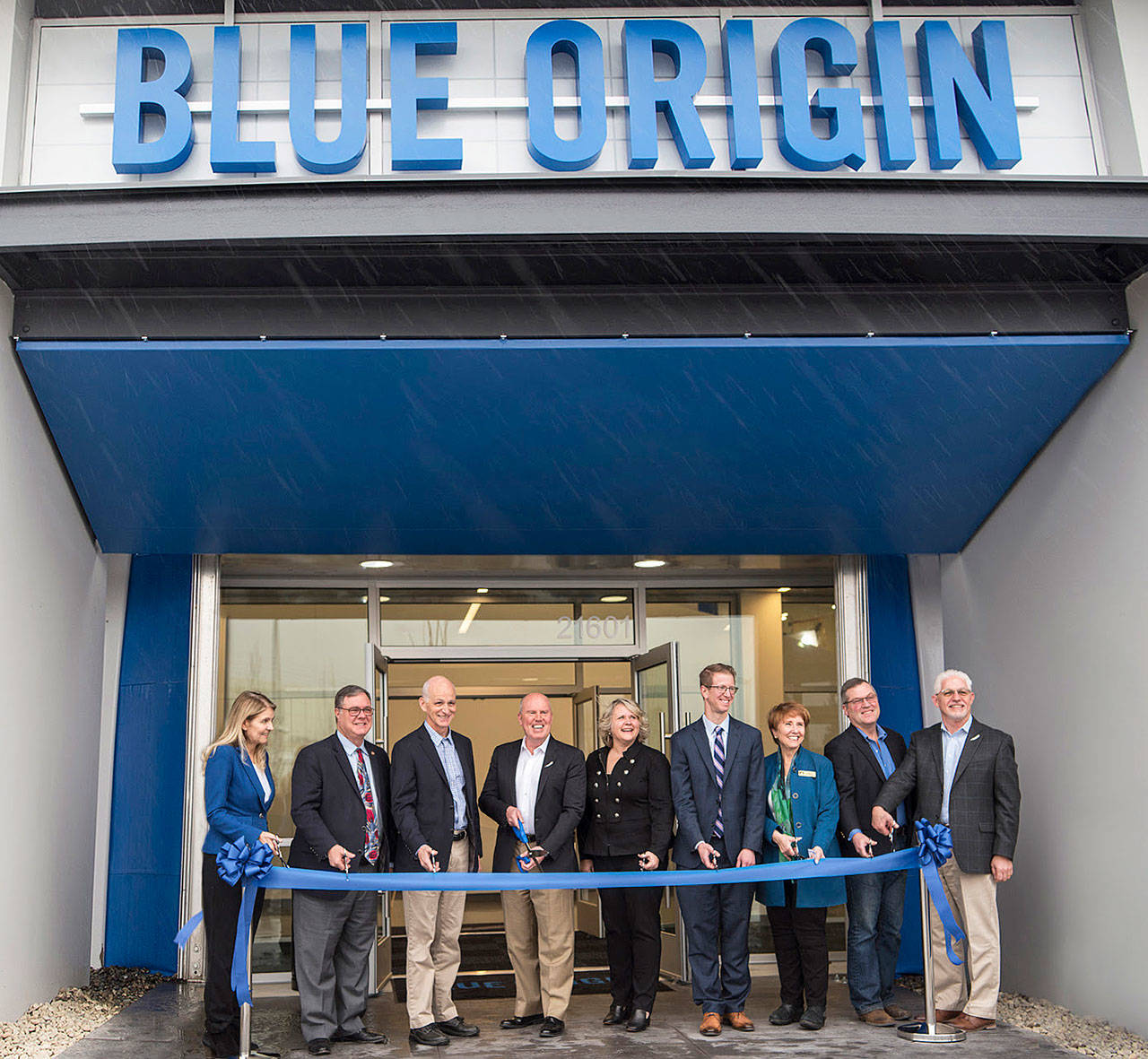Blue Origin opened its new headquarters and research and development facility Monday in Kent.
The facility is Blue Origin’s hub of operations as it continues to grow since opening in 2000 in Kent. The aerospace company, owned by Amazon founder Jeff Bezos, finished its 236,000-square-foot facility along 76th Avenue South between South 212th Street and South 228th Street. The company aims to one day carry passengers far into space.
The current facility covers about 260,000 square feet on 26 acres at 21218 76th Ave. S. The new facility went up on a portion of 31 acres Blue Origin bought from the Barnier family, which had farmed land in the Kent Valley for generations, for $14.1 million in 2017, according to King County property sales records.
Below are excerpts from remarks given by Blue Origin CEO Bob Smith at the Monday ribbon cutting event, according to a Blue Origin email:
“2019 was a great year of progress and preparation for us, and 2020 is going to be even more remarkable – so we’re growing quickly. We grew by a third last year and we’re going to continue to grow at a rapid pace.
We named this building the O’Neill Building after Gerard O’Neill, a physicist who envisioned millions of people living and working in space for the benefit of Earth. Gerard O’Neill was one of the visionaries who thought about how we go out into space in a quick and sustainable way so that we can preserve our planet.
For those of you that are Washington state residents, what is exciting is we’re going to be doing all this work from a headquarters based here in Kent. It’s a remarkable statement to say that we’re going to fly humans to space, we’re going to build and design large engines and a large orbital rocket, and we’re going to go back to the Moon – all through work centered here.
We’re excited to continue to see this growth in this new facility. We broke ground on this facility in January of 2019 and it came up in just 11 months. It houses approximately 1,500 people. The building sits on a 30-acre plot of land, and we’re using 13 of those acres for a wildlife habitat and flood storage, as well as protecting against invasive species. This is a very sustainable building with better insulation and better energy consumption than a traditional building.”


